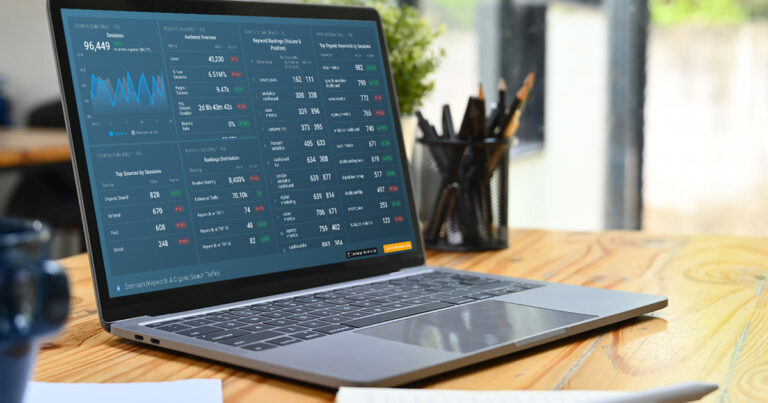Avoid a Budget Suck with a Better Facebook Ad Spend
The first rule of thumb for any content strategy is to produce thoughtful, helpful content that your audience can use, and while Facebook likes are nice to see add up, buying them is a different story.
Many businesses spend tons of budget dollars on promoting their company pages through Facebook’s ad platform with the goal of getting more Facebook likes on their page. In my opinion, this practice is a quick way to spend a lot of money for little result.
Let’s think about the similarities that exist between a blog (content product) and your social media (also content production). Your blog may house countless helpful articles, and strategically sharing different articles with your audience has more of an impact than sharing your entire blog, right? If you share the whole blog, you’re requiring your audience to do some searching to see how helpful your posts are to them.
Your social media strategy shouldn’t be any different. Your existing and potential customers will skip right over anything that doesn’t directly speak to them and the problems they’re trying to solve.
So how can we apply this logic to your strategy for Facebook and other social platforms?
The Better Ad Spend for Quality Facebook Likes
If you have a budget for paid advertising, we recommend using those dollars to promote individual posts.
This method is more effective – and cost-effective – than promoting your entire page for several reasons.
- You can run ads using content you’ve already shared, allowing you to engage a new audience with content you already know performs well.
- You can target your ads to custom audiences you’ve created, being sure to get your post in front of people who are most likely to engage with that post.
- You can set your ad targeting to exclude your existing audience, meaning your metrics will only include new engagements so you can see how effective your post was among new audiences.
- Running Facebook ads with the goal of higher engagement carries a lower cost per click than running ads with the goal of getting more page followers or Facebook likes.
Facebook Ads Can Prompt Page Likes, Too
One other major benefit of running ads with individual Facebook posts is that you can turn any engagement with that post into a push to get more likes on your page.
When users engage with your post, you can click to see the list of everyone who has liked or commented. Next to their name is a button indicating whether they already like your page. If they don’t, the button gives you the option to invite them. Clicking this button sends a notification to the user to like your page. This feature is free and appears to the user as an automatically-generated reminder based on their recent activity.
You should note, however, that this type of invitation will come from your personal account rather than your business’s Facebook page. For example, if your name is John Smith and your business is called Cooking Delight, the notification would say, “John Smith has invited you to like Cooking Delight’s page.”
We recommend you invite new users as close as possible to the time of their engagement with your post. This way, the reminder won’t seem out of the blue to the user and the impact of your post that elicited their engagement will still be fresh in their mind.
The Power of a Facebook Post Versus a Page
If you have good content, it makes more sense to put that content in front of your audience. Asking users to like your page when they don’t know the quality of your page is much less effective.
Focusing on growing engagement rather than increasing page likes is a simple choice between vanity metrics and actual conversions. Organic reach for content on Facebook has been steadily diminishing over the last several years, forcing everyone to use paid methods to achieve any sort of result on the platform.
Not only is it more expensive to pay for new page likes (let’s say roughly 45 cents per like), but you also have to dedicate budget to getting those new page followers to engage with your content now that they’re following your page (about 4 cents per like). Therefore, your total cost becomes 49 cents.
On the flip side, you can spend about 9 cents per like promoting a Facebook post to non-fans, and you’ll likely not only get more engagement than if you were to promote your page, but you can convert many of those new post likes to page likes as well.
Furthermore, just because someone isn’t following your Facebook page doesn’t mean they’re not familiar with or even a fan of your brand. There are several advertising and targeting tactics you can use through Facebook to generate the engagement you’re looking for without sacrificing a major chunk of your paid ad budget.
- Remarketing ads. These ads will show up to anyone who has visited your website, prompting them to take the next step in the sales funnel. Remarketing is a great way to engage users on Facebook who are already familiar with your brand and likely to become a customer, even if they’re not a follower of your Facebook page.
- Targeted ads. If you track website behavior, you can also segment your audience and deliver targeted Facebook ads based on their interests or activity on your site.
- Custom Targeting. Using custom targeting options for your Facebook ads ensures you’re making the biggest impact with your content. Getting one piece of great content in front of the most appropriate audience carries far more ROI for your overall Facebook presence.
Facebook is a free platform – until you want to actually realize some ROI from using it for your business. So be smart about how you’re spending your budget dollars for paid advertising. Facebook has some great options to reach wider audiences, and if you have the right content, investing a little money in the right ways will help you do just that.


